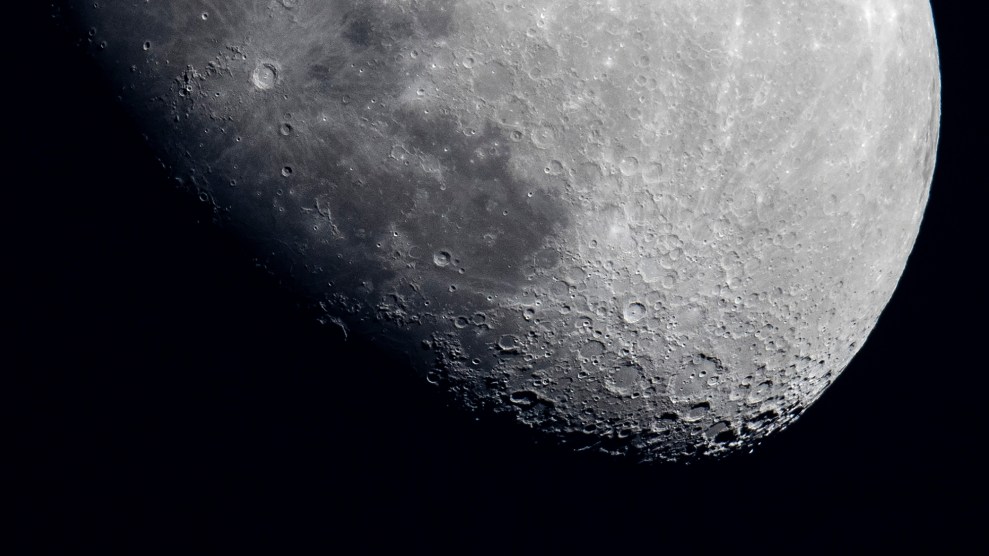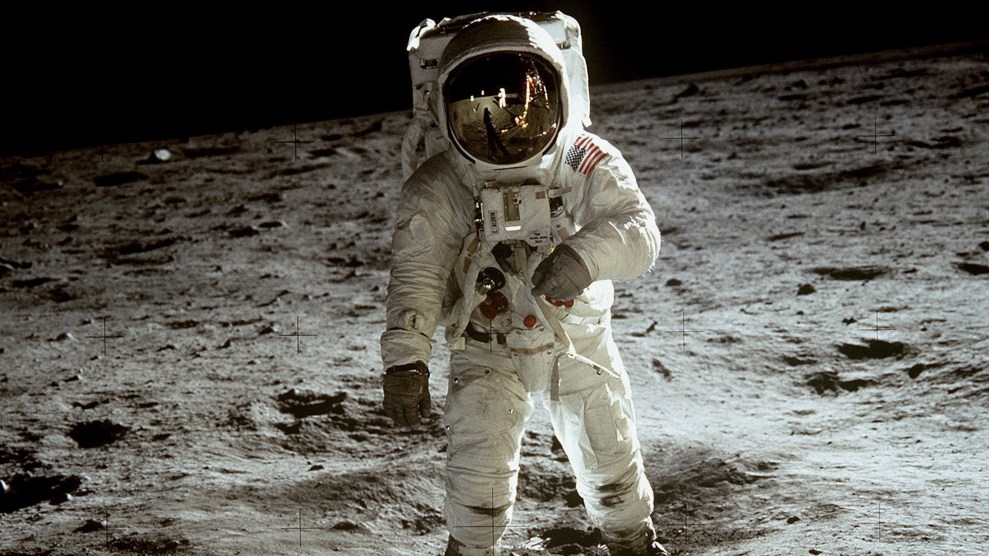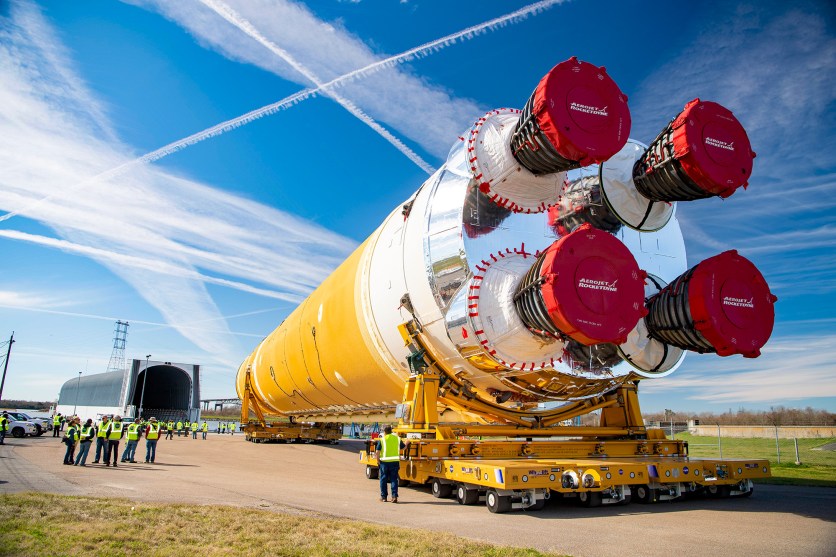
Boris Roessler/Picture Alliance/Getty
This story was originally published by the Guardian and is reproduced here as part of the Climate Desk collaboration.
Proponents of a “moonshot” idea to deal with global heating have been handed a new, very literal, interpretation by researchers who have proposed firing plumes of moon dust from a gun into space in order to deflect the sun’s rays away from Earth.
The seemingly outlandish concept, outlined in a new research paper, would involve creating a “solar shield” in space by mining the moon of millions of tons of its dust and then “ballistically eject[ing]” it to a point in space about 1 million miles from Earth, where the floating grains would partially block incoming sunlight.
“A really exciting part of our study was the realization that the natural lunar dust grains are just the right size and composition for efficiently scattering sunlight away from Earth,” said Ben Bromley, a theoretical astrophysicist at the University of Utah, who led the research, published in Plos Climate. “Since it takes much less energy to launch these grains from the moon’s surface, as compared with an Earth launch, the ‘moonshot’ idea really stood out for us.”
Bromley and two other researchers considered a variety of properties, including coal and sea salt, that could dim the sun by as much as 2 percent if fired into space. The team eventually settled on the dust found on the moon, although millions of tons would have to be mined, sifted and loaded into a ballistic device, such as an electromagnetic rail gun, and fired into space each year into order to maintain this solar shield.
Getting this mining and projective equipment to the moon would be a “significant project,” Bromley conceded, and might also require the positioning of a new space station in an area called the L1 Lagrange point, found between Earth and the sun, in order to “redirect packets of dust onto orbits that could provide shade for as long as possible.”
Such an approach would act as a “fine-tuned dimmer switch, leaving our planet untouched,” Bromley said, an advantage over other solar geoengineering proposals that have raised concerns about the environmental impact of spraying reflective particles within the Earth’s atmosphere.
The moon dust would have to be continually propelled into space in order to take the edge off global heating, however, or risk a so-called “termination shock” whereby temporary cooling is abruptly stopped and the world is left to rapidly heat up. Bromley insisted that the research’s sci-fi idea is no substitute for the primary task of cutting planet-heating emissions in the first place.
“Nothing should distract us from reducing greenhouse gas emissions here on Earth,” he said. “Our strategy may just be a moonshot, but we should explore all possibilities, in case we need more time to do the work here at home.”
Tinkering with the world’s climate, including attempts to reflect sunlight, is a controversial and still relatively fringe response to the climate crisis. It has gained some traction amid repeated warnings that countries are not slashing emissions quickly enough to prevent disaster, however, with the US government launching a research project around the concept last year.
Ted Parson, an expert in environmental law at UCLA, said the moon dust proposal was “fun, scientifically interesting speculation” that was unlikely to be put into practice, partially due to the larger cost and lack of control compared with Earth-based geoengineering options.
“There seems to be a bit of uptick of interest in space-based geoengineering schemes more broadly,” Parson said. “They were long dismissed as wildly impractical due to technical and cost considerations, but my impression is that the ongoing reduction of launch costs is piquing people’s interest and strange ideas are bubbling around.”
But opponents of solar geoengineering, whether on Earth or in space, argue that it is an unhelpful and potentially dangerous distraction from the urgent imperative to transition away from burning fossil fuels.
“The idea to mine the moon or near-Earth asteroids in order to artificially block parts of the sunlight is no solution to the ongoing and intensifying climate crisis,” said Frank Biermann, professor of global sustainability governance at Utrecht University. “What is needed are massive cutbacks in greenhouse gas emissions, which require rapid technological advancement and socioeconomic transitions. Mining the moon is not the answer that we need.”














